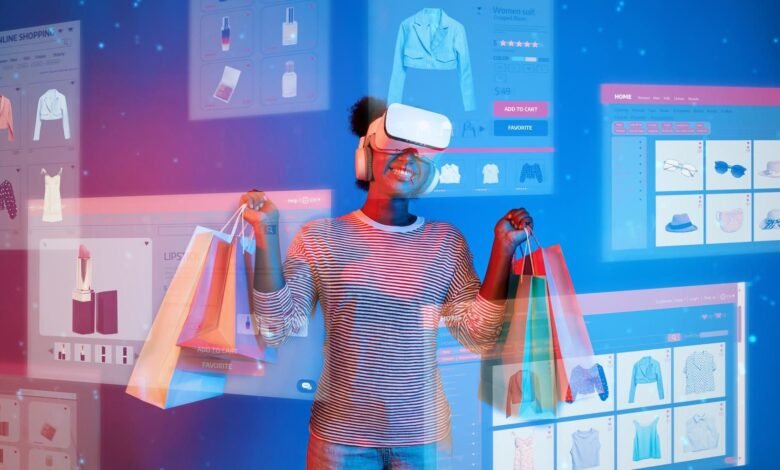The Rise of AI-Powered Product Recommendations in E-Commerce

In the digital marketplace, consumers expect experiences that feel personalized and relevant. Gone are the days when a static homepage and generic product listings were enough to capture attention. Shoppers now want to feel understood, with suggestions that match their unique preferences and behavior.
AI-powered product recommendations have emerged as a game-changer in the e-commerce industry. By leveraging artificial intelligence and machine learning, retailers can analyze user behavior, predict purchase intent, and offer products tailored to each shopper. This blog explores how these systems work, their benefits, and strategies for implementing them effectively to boost engagement and conversions.
Why Personalized Recommendations Matter
Suppose you are visiting an online store where the products you see are completely random. Would you feel compelled to browse longer or make a purchase? Most likely not. Personalized recommendations address this problem by showing customers what they are most likely to buy, keeping them engaged, and reducing decision fatigue.
The effectiveness of personalized recommendations comes from understanding shopper behavior at a granular level. This includes past purchases, browsing patterns, wish lists, and even session duration. By predicting what users want before they even search, retailers can create a seamless shopping journey that feels intuitive and efficient.
Additionally, personalization helps retailers stand out in a crowded market. When every competitor offers similar products, the experience becomes the differentiator. AI-powered product recommendations enable stores to deliver consistently relevant content, enhancing user satisfaction and loyalty.
How AI Transforms Product Recommendations
Traditional recommendation engines relied on simple algorithms, such as collaborative filtering or basic rule-based logic. While these methods achieved some success, they lacked the ability to adapt in real-time or consider complex user behaviors.
AI-powered recommendations go a step further. Machine learning models analyze multiple variables, such as purchase history, product popularity, contextual data, and real-time interactions, simultaneously to predict the next best product for each user. This process creates a dynamic and continuously evolving recommendation system that improves over time.
Moreover, AI can optimize recommendations not just for humans but also for emerging AI-driven shopping assistants. This means that suggestions are structured to align with external platforms, search engines, and conversational interfaces, ensuring a consistent experience across touchpoints.
Types of AI-Powered Product Recommendations
E-commerce platforms can deploy several AI-driven recommendation strategies to boost engagement. Understanding the types can help marketers select the right approach for their audience. Here are the main types:
- Collaborative Filtering
Collaborative filtering predicts products a user may like based on the preferences of similar shoppers. If two users share overlapping interests or purchase patterns, AI suggests products that one user has purchased to the other.
Benefits:
- Easy to implement and effective for established products.
- Leverages collective user behavior to find relevant items
However, collaborative filtering may struggle with new products or users with limited purchase history, a challenge known as the cold start problem.
- Content-Based Recommendations
Content-based systems analyze product attributes and match them with user preferences. For instance, if a shopper frequently browses eco-friendly skincare, AI can recommend other products with similar ingredients or sustainability features.
Benefits:
- Reduces dependence on user overlap
- Offers highly specific, targeted suggestions
By combining collaborative and content-based approaches, retailers can create hybrid systems that maximize relevance for all users.
Key Benefits of AI-Powered Recommendations
The rise of AI-powered product recommendations is not just a technological trend; it’s a strategic necessity. Businesses that adopt these systems can enjoy several tangible benefits. Here are the main benefits:
- Increased Conversion Rates
By presenting users with products that match their interests, AI recommendations can significantly increase the likelihood of purchase. Personalized suggestions make the shopping experience smoother and reduce friction in the decision-making process.
- Higher Average Order Value (AOV)
Recommendations such as complementary products, bundles, or upsells encourage customers to explore more items. AI can identify opportunities for cross-selling that feel natural rather than intrusive.
- Enhanced Customer Retention
Shoppers are more likely to return to a platform that consistently understands their preferences. AI recommendations help maintain engagement by providing fresh, relevant suggestions at every visit.
- Real-Time Adaptation
Unlike static recommendation engines, AI systems adjust in real time based on user interactions. This dynamic capability ensures that the suggested products remain relevant throughout the customer journey.
Implementing AI-Powered Recommendations Successfully
While the benefits are clear, implementing AI recommendations requires a thoughtful approach. Here’s how to maximize the impact:
- Collect High-Quality Data
AI thrives on data. Accurate, comprehensive user information—including clicks, purchases, and browsing patterns—is essential for generating meaningful recommendations.
- Track user behavior across devices and channels.
- Ensure privacy compliance with regulations like GDPR and CCPA.
- Test and Iterate
Continuous testing enables teams to measure which recommendation strategies yield the best results. A/B testing different algorithms or layouts can uncover insights that improve conversion and engagement.
- Personalize Across Touchpoints
Customers interact with brands across websites, mobile apps, emails, and social platforms. Ensuring consistent, personalized recommendations across all touchpoints strengthens brand experience and increases loyalty.
- Monitor Performance Metrics
Key metrics include click-through rates, conversion rates, revenue per visit, and retention. Tracking these helps identify underperforming recommendations and informs optimization strategies.
Best Practices for Optimized AI Recommendations
For e-commerce businesses looking to implement AI recommendations effectively, a few best practices stand out:
- Use Diverse Recommendation Formats
- Product carousels on the homepage and category pages.
- Dynamic bundles and cross-sell suggestions at checkout.
- Personalized emails with tailored product suggestions.
Mixing formats ensures that recommendations reach users at the right moment without overwhelming them.
- Leverage AI for Real-Time Learning
AI should adapt to changing user behavior. Real-time updates enable the system to adjust product suggestions in response to new interactions, emerging trends, and inventory changes.
3. Automation with Human Oversight
While AI can make powerful predictions, marketers should periodically review recommendations to ensure alignment with brand strategy, seasonal promotions, and merchandising goals.
Overcoming Common Challenges
Despite its advantages, deploying AI-powered recommendations presents challenges. Understanding these obstacles can help teams prepare better.
- Cold Start Problem: New users or products lack historical data, resulting in less accurate predictions. Solution: combine AI with content-based recommendations or prompt users for preferences upfront.
- Data Privacy Concerns: Collecting user behavior data must comply with privacy laws. Solution: anonymize data, obtain consent, and ensure secure storage.
- Algorithm Bias: AI can reflect historical purchasing biases, which may limit diversity in recommendations. Solution: periodically audit algorithms and diversify datasets.
By addressing these issues proactively, retailers can maintain trust while delivering powerful personalization.
The Future of Product Recommendations
AI-powered product recommendations are evolving beyond individual e-commerce platforms. Integration with emerging AI agents, voice assistants, and social commerce platforms will redefine how shoppers discover products.
Expect the next generation of recommendations to:
- Understand context and intent more deeply.
- Suggest products before a customer explicitly searches.
- Deliver seamless, cross-channel experiences.
In essence, recommendations will become predictive, adaptive, and omnipresent, ensuring that every shopping interaction feels personalized and intuitive.
Conclusion
In a world where attention spans are shrinking and shoppers demand personalized experiences, AI-powered product recommendations have become a cornerstone of e-commerce success. They drive conversions, increase order value, enhance retention, and ensure that every interaction feels tailored to the individual.
E-commerce teams that embrace these technologies gain a competitive advantage. By leveraging AI, businesses can move from generic, one-size-fits-all experiences to dynamic, predictive journeys that anticipate user needs. The result is not only higher revenue but also stronger customer relationships and loyalty.
As online shopping continues to evolve, the adoption of AI-powered recommendations will no longer be optional; it will be essential for any retailer seeking growth and relevance.



